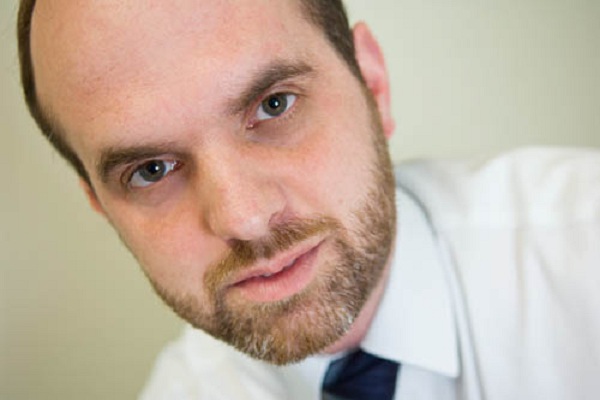Embrace change or move out of the way
Disruption is occurring whether we like it or not, so go along for the ride rather than stay standing still...


How do you cope with change? It's a big question with no simple answer. While there is no definitive coping strategy, experts can agree with one simple premise change is the new normal and CIOs, just like any other leading executives, must get used to a constant state of flux.
That was one of the key conclusions from a recent invitation-only event organised by BCS, The Chartered Institute for IT. Evidence from the meeting suggests that successful digital leaders focus on the changing nature of work and on driving organisational change.
That concentration is a matter of urgency. If a CIO does not disrupt the IT organisation or the business, then someone else probably will. One only needs to think of the rise of the CDO and the increased influence of the CMO over technology purchasing.
Gartner predicts CMOs will spend more on technology than CIOs by 2017. The analyst firm also believes that 25 per cent of blue-chip businesses will have a CDO in situ by the end of this year.
CIOs, then, must be aware that other c-suite executives are already trampling on their traditional stamping ground. Without proving their value to the rest of the business, CIOs are in danger of being undermined and usurped.
What's more, the challenge to CIOs is not just confined to the upper echelons of power. Attendees at the BCS event recognised that driving change is tough and the challenge of preparing people for constant transformation, especially younger staff members, is only going to increase.
Conversation turned to the belief that the up-and coming generation have different expectations regarding the use of technology and the working practices of modern business. Younger people, it was suggested, see life differently; they gather experiences and they want to be entrepreneurial.
Sign up today and you will receive a free copy of our Future Focus 2025 report - the leading guidance on AI, cybersecurity and other IT challenges as per 700+ senior executives
Retained employees must be careful to avoid blocking such creativity. CIOs and their senior peers should learn from the digitally engaged generation. They should use practices like reverse mentoring to explore and understand how younger people make the most of technology, rather than expecting all workers to conform to agreed standards and principle.
Great ideas can bubble up from any point in the business. C-suite executives must be open enough to recognise that the culture of an organisation, as well as customer demands and business models, will also be in a constant state of flux in the digital era.
There is, in short, no option but to embrace change. CIOs who fail to grab the opportunities created by transformation will soon become an executive spare part.

Mark Samuels is a freelance writer specializing in business and technology. For the past two decades, he has produced extensive work on subjects such as the adoption of technology by C-suite executives.
At ITPro, Mark has provided long-form content on C-suite strategy, particularly relating to chief information officers (CIOs), as well as digital transformation case studies, and explainers on cloud computing architecture.
Mark has written for publications including Computing, The Guardian, ZDNet, TechRepublic, Times Higher Education, and CIONET.
Before his career in journalism, Mark achieved a BA in geography and MSc in World Space Economy at the University of Birmingham, as well as a PhD in economic geography at the University of Sheffield.
-
 Gender diversity improvements could be the key to tackling the UK's AI skills shortage
Gender diversity improvements could be the key to tackling the UK's AI skills shortageNews Encouraging more women to pursue tech careers could plug huge gaps in the AI workforce
-
 Researchers claim Salt Typhoon masterminds learned their trade at Cisco Network Academy
Researchers claim Salt Typhoon masterminds learned their trade at Cisco Network AcademyNews The Salt Typhoon hacker group has targeted telecoms operators and US National Guard networks in recent years
-
 Chief data officers believe they'll be a 'pivotal' force in in the C-suite within five years
Chief data officers believe they'll be a 'pivotal' force in in the C-suite within five yearsNews Chief data officers might not be the most important execs in the C-suite right now, but they’ll soon rank among the most influential figures, according to research from Deloitte.
-
 UK firms are pouring money into AI, but they won’t see a return on investment unless they address these key issues
UK firms are pouring money into AI, but they won’t see a return on investment unless they address these key issuesNews An SAP report projects increased AI investment, but cautions that too many organizations are taking a fragmented approach
-
 Optimise CX and accelerate business growth through your voice network
Optimise CX and accelerate business growth through your voice networkwhitepaper Protecting the human experience in a digital world
-
 Enterprises are doubling down on IT optimization strategies – and it’s delivering huge financial returns
Enterprises are doubling down on IT optimization strategies – and it’s delivering huge financial returnsNews Organizations that have cracked IT cost optimization and innovation reap the rewards both financially and in terms of time to market.
-
 AI projects are faltering as CDOs grapple with poor data quality
AI projects are faltering as CDOs grapple with poor data qualityNews Chief data officers say they can't maintain consistent data quality, and that it's affecting AI outcomes
-
 IDC InfoBrief: Sustainability doesn’t need to be all stick and no carrot
IDC InfoBrief: Sustainability doesn’t need to be all stick and no carrotwhitepaper CIOs are facing two conflicting strategic imperatives
-
 How to empower employees to accelerate emissions reduction
How to empower employees to accelerate emissions reductionin depth With ICT accounting for as much as 3% of global carbon emissions, the same as aviation, the industry needs to increase emissions reduction
-
 The Forrester Wave™: API management solutions
The Forrester Wave™: API management solutionsWhitepaper The 15 providers that matter the most and how they stack up